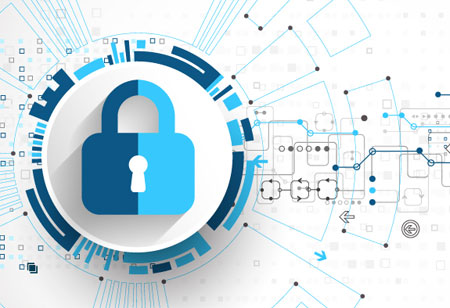THANK YOU FOR SUBSCRIBING
AI-Powered Data Protection Transitions from Reactive Defense to Predictive Security in APAC
A paradigm shift in APAC cybersecurity is emerging, focusing on proactive AI-driven predictive models to protect data against sophisticated cyber threats.

By
Apac CIOOutlook | Wednesday, October 08, 2025
Stay ahead of the industry with exclusive feature stories on the top companies, expert insights and the latest news delivered straight to your inbox. Subscribe today.
A new paradigm in data protection is quietly unfolding across the APAC region. As organizations navigate an increasingly complex digital landscape, the traditional reactive approach to cybersecurity is proving inadequate. In its place, a more intelligent, proactive, and predictive model is emerging, powered by the transformative capabilities of AI. This shift marks a critical evolution in how businesses safeguard their most valuable asset—data—moving beyond mere defense to a state of predictive security.
The Predictive Revolution: AI’s Role in Securing the Digital Future
The rapid digitalization of economies in the APAC region, coupled with the exponential growth of data, has created a fertile ground for sophisticated cyber threats. For years, the cybersecurity posture of most organizations was akin to a fortress under siege – building higher walls and stronger gates in response to each new attack. This reactive stance, while necessary, is fundamentally limited. It is a strategy of perpetual catch-up, where defenders are always one step behind the attackers. The sheer volume and velocity of modern cyber threats, often automated and highly evasive, can easily overwhelm traditional security measures and the human analysts who manage them.
The paradigm is shifting from a reactive approach to a predictive one, driven by the integration of AI and machine learning into the heart of data protection frameworks. Instead of waiting for an attack to happen, AI-powered systems are designed to anticipate and neutralize threats before they can inflict damage. This proactive approach is not about building a more resilient fortress, but about creating an intelligent, adaptive security ecosystem that can foresee and forestall malicious activities.
Behavioral Intelligence for Proactive Security
At the heart of this transformation lies the ability of AI algorithms to analyze vast and complex datasets in real-time. By constantly monitoring network traffic, user behavior, and system logs, machine learning models can establish a baseline of regular activity. Any deviation from this baseline, no matter how subtle, is immediately flagged as a potential threat. This capability, known as anomaly detection, enables the identification of previously unseen malware and zero-day exploits that would otherwise bypass signature-based detection methods.
AI also excels at behavioral analysis, understanding the typical patterns of interaction between users, data, and applications. When an account suddenly starts accessing sensitive files at an unusual time or from an unfamiliar location, the AI can recognize this as anomalous behavior and initiate a response, such as requiring multi-factor authentication or temporarily restricting access. This is a far more granular and context-aware approach to security than traditional rule-based systems.
Regulatory Compliance Through Predictive Security
The power of predictive security is also evident in the realm of threat intelligence. AI-driven platforms can sift through global threat feeds, dark web forums, and security research to identify emerging attack vectors and campaigns that could potentially target organizations in the APAC region. This predictive threat intelligence enables security teams to proactively patch vulnerabilities, update security controls, and educate employees about the latest phishing scams, effectively staying ahead of the adversary.
In the diverse APAC market, the drivers for adopting AI in data protection are manifold. The proliferation of cloud services, the rise of the remote workforce, and the increasing interconnectedness of digital ecosystems have expanded the attack surface, making traditional perimeter-based security obsolete. In this environment, a data-centric and predictive approach is crucial to ensure the security and integrity of information, regardless of its location.
The evolving regulatory landscape across the region is compelling organizations to adopt more sophisticated data protection measures. A predictive security model not only helps in mitigating the risk of data breaches but also provides the necessary audit trails and reporting capabilities to demonstrate compliance with various data privacy mandates.
The integration of AI also automates and orchestrates incident response, a critical function that has historically been manual and time-consuming. When a potential threat is detected, an AI-powered security platform can automatically initiate a series of actions, such as isolating an infected endpoint from the network, blocking a malicious IP address, or revoking compromised credentials. This automated response happens at machine speed, significantly reducing the dwell time of an attack and minimizing the potential for damage.
The role of AI in data protection is set to become even more profound. The continued advancements in deep learning and neural networks will enable even more accurate threat predictions and more autonomous response capabilities. The strength of its firewalls will not define the future of data security in the APAC region, but rather the intelligence of its defenses. By adopting a predictive security posture, organizations can transition from a state of constant vulnerability to one of proactive resilience, ensuring their digital transformation journey is both innovative and secure. The unseen guardian, powered by AI, is no longer just a defender; it is a prescient protector of the digital future.





